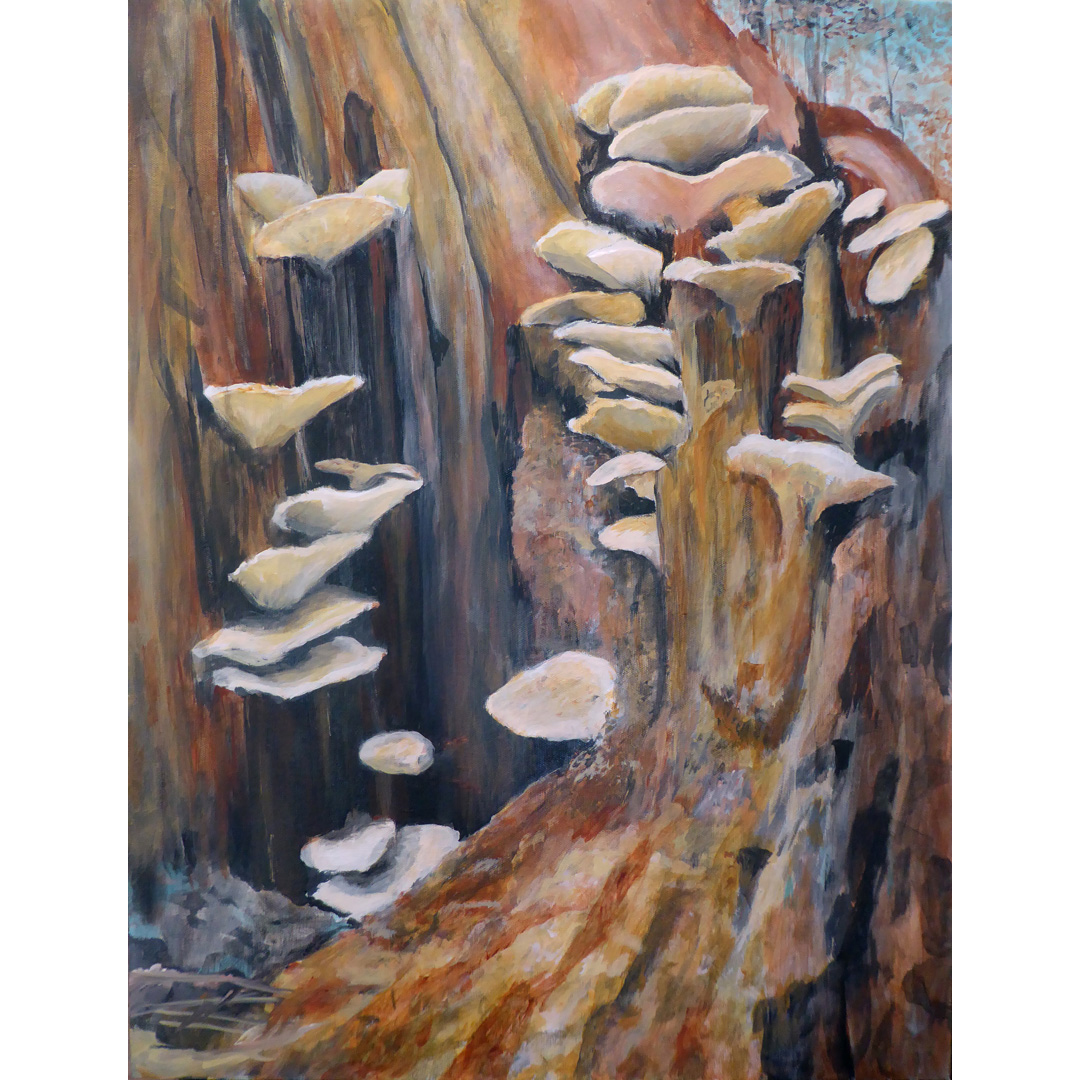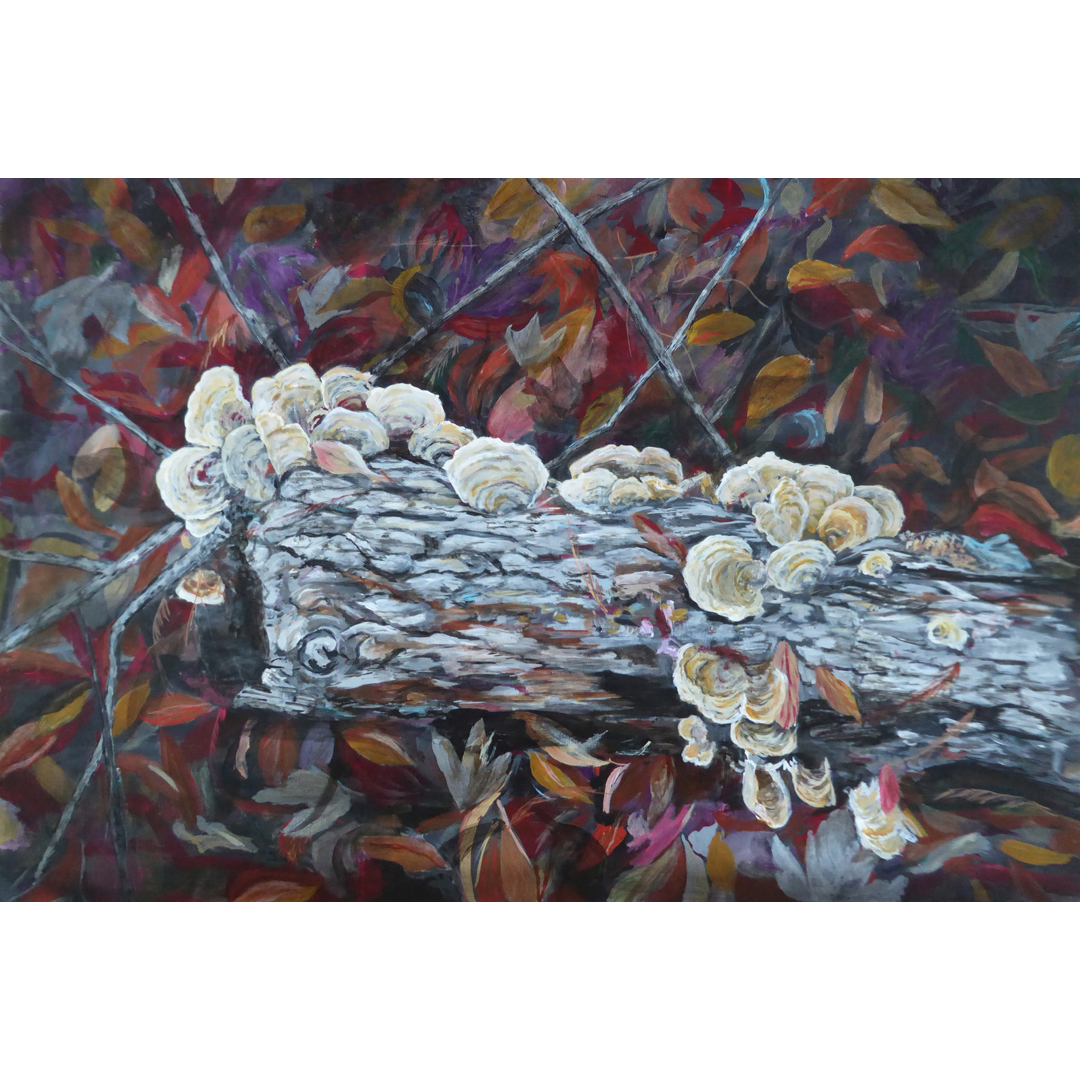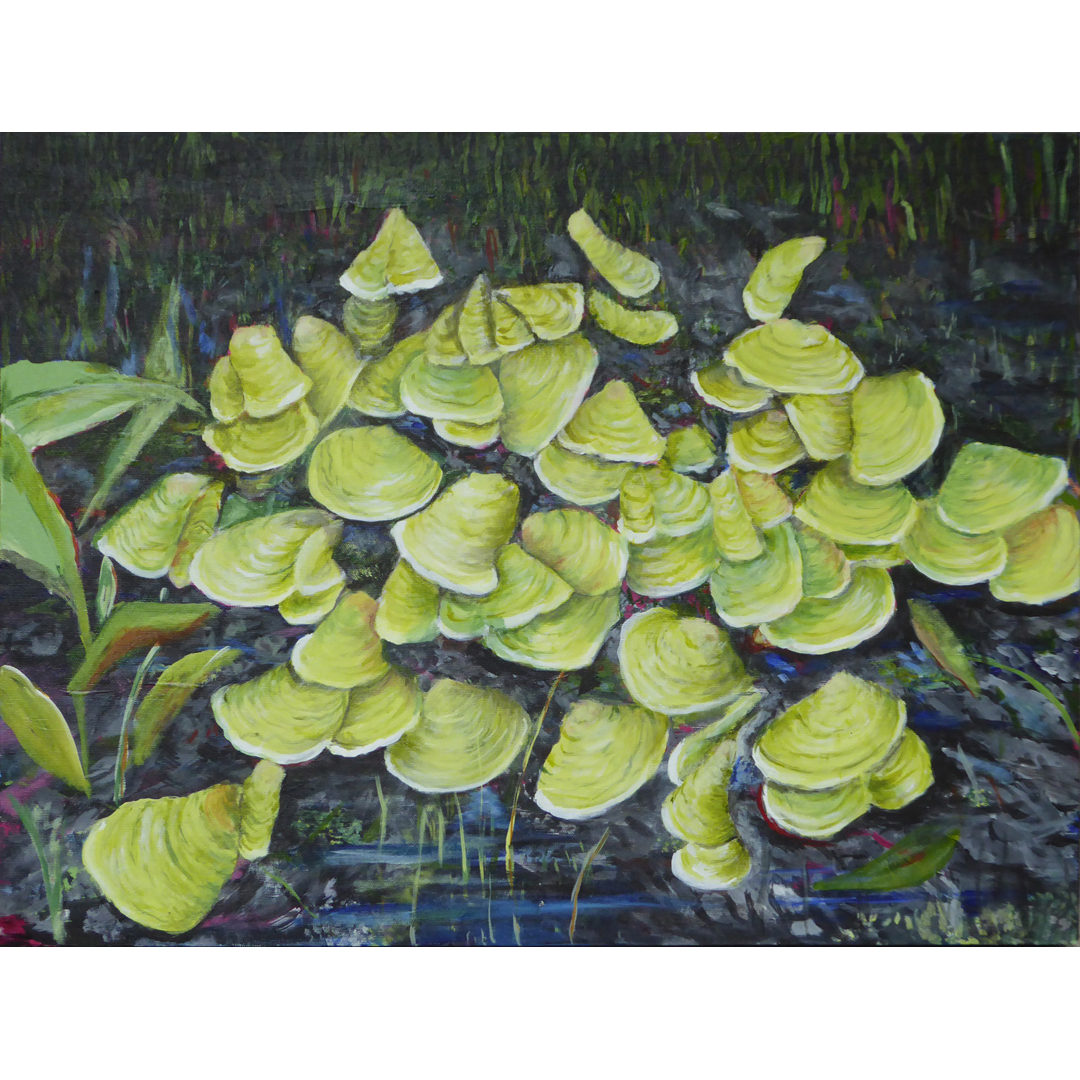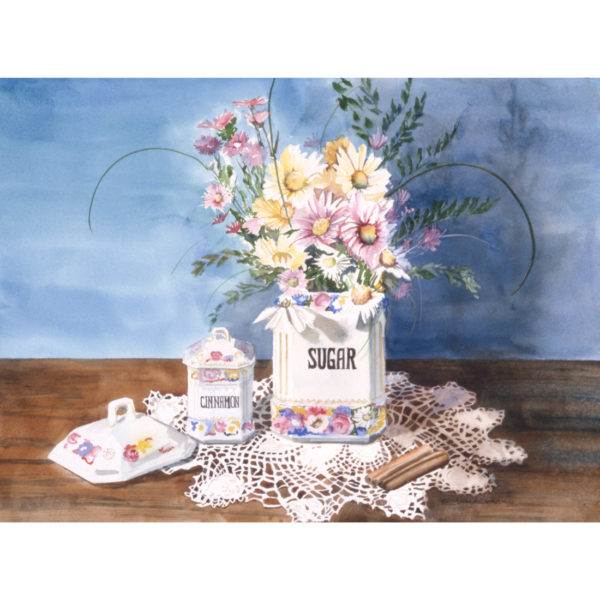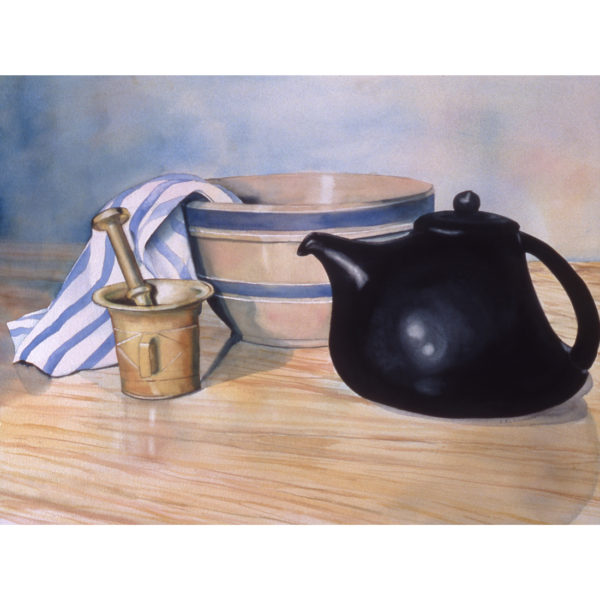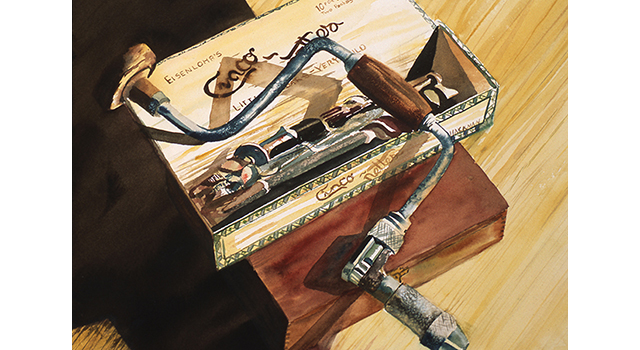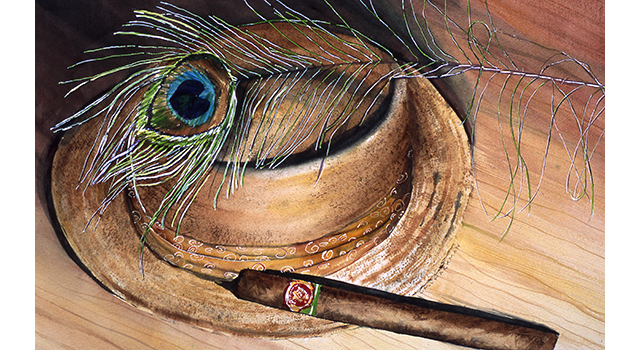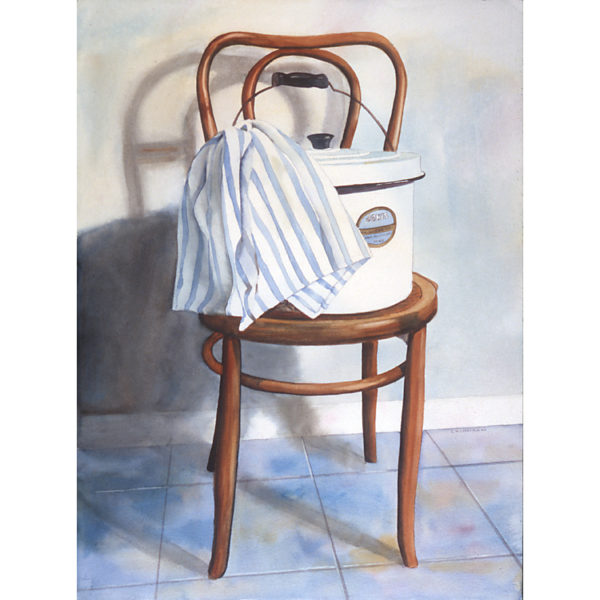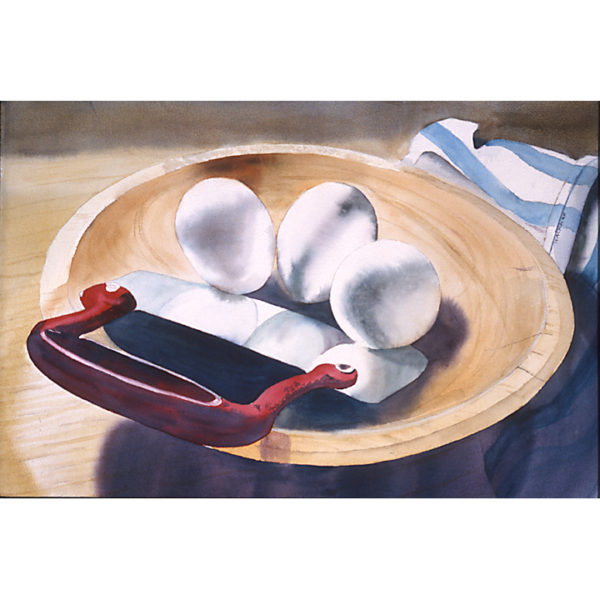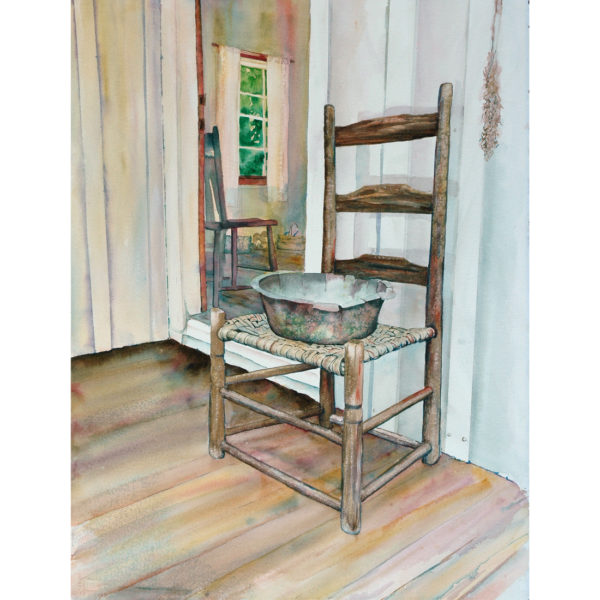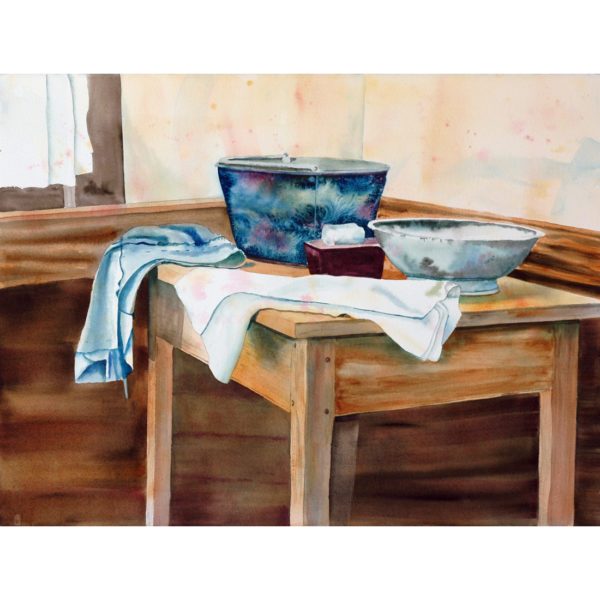Wood Fungi Are Art
I’ve been fascinated with shelf fungus since I was a child. My grandmother would sometimes pull especially large pieces off trees near her New Jersey home. The undersides of the fungus were creamy white. We would take a sharp stick and etch images into the creamy surface. The pieces would be placed on the fireplace mantal to dry and harden. After about a week, the final art would get a coat of varnish to preserve it.
When I moved to Gainesville I was delighted to spend time in the many wooded parks. These days, when walking in the Gainesville area nature, I strive to leave no trace by carrying only a cell phone and sketch material to capture the fauna I encounter. Shelf fungi still fascinate me, however, now I make paintings of theminstead of removing them from their woody homes. The colors and shapes form artistic patterns that I find irresistible to paint.
In addition, to delighting the visual senses, fungi are nature’s recyclers. Shelf fungi infect weakened trees that decompose and become important nutrients for the soil. The fertile soil then welcomes the growth of new trees. This decomposition recycles carbon, as the fungi breaks down the cellulose in the bark of the tree and returns the carbon back to the atmosphere maintaining a healthy, renewing forest. Shelf fungi also provide essential living spaces for many species including birds, insects, and mites.
Acrylic on Canvas
Shelf Fungus on a Log is 36” x 24” $1,100
Tree Hollow is 18” x 24” $750.00
Green Shelf Fungus 24″ x 18″ $750.00

